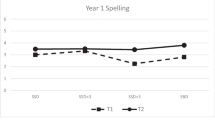Summary
SHELLS (Support at Home for Early Language and LiteracieS) is a program designed for families with children from birth to three years of age. It has operated in Australia since 1998. Partnerships are at the heart of SHELLS. Parents know their children, their community, and what is culturally appropriate. Facilitators know the community, have educational qualifications, and have received specialised SHELLS training. Researchers know which factors have been identified as important in supporting early literacy. A combination of these areas of expert knowledge — situated expertise — offers children strong, ongoing support in their early literacy learning.
Résumé
SHELLS [Soutien à domicile pour le langage et l’alphabétisation précoces] (Support at Home for Early Language and LiteracieS) est un programme destiné aux familles avec des enfants depuis la naissance jusqu’à l’âge de trois ans. II existe en Australie depuis 1998. SHELLS est fondé sur des partenariats. Les parents connaissent leurs enfants, leur communauté, et savent ce qui est culturellement correct. Les animateurs connaissent la communauté, sont des enseignants diplômés, et ont reçu une formation spécialisée portant sur SHELLS. Les chercheurs savent quels facteurs se sont avérés importants en ce qui concerne l’alphabétisation précoce. La combinaison des ces domaines de compétence — les compétences localisées — offre aux enfants un soutien solide et continu au cours de leur alphabétisation précoce.
Resumen
El Programa SHELLS (Apoyo en el Hogar para el Lenguaje Temprano y la Alfabetización o, en inglés (Support at Home for Early Language and LiteracieS) ha sido diseñado para las familias con niños de cero a tres años de edad y ha operado en Australia desde 1998. Las diferentes asociaciones o relaciones son la esencia misma de SHELLS. Los padres conocen a sus hijos, a su propia comunidad, y saben qué es lo apropiado a su cultura. Las personas que facilitan (o “facilitadores”) conocen a la comunidad, y tienen la formación educativa así como capacitación especializada en SHELLS. Los investigadores saben qué factores han sido identificados como importantes en el sostén de la alfabetización temprana. La combinación de estas áreas de conocimiento experto — pericia localizada — le ofrece a los niños un respaldo fuerte y permanente en su aprendizaje de alfabetización temprana.
Similar content being viewed by others
References
Australian Language and Literacy Council, National Board of Employment, Education and Training (ALLC) (1995).Teacher education in English language and literacy. Canberra: AGPS.
Aram, D., & Levin, I. (2002). Mother-child joint writing and storybook reading: Relations with literacy among low SES kindergarteners,Merrill-Palmer Quarterly, 48 (2), 202–224.
Bowes, J. (1999). ‘Parents’ response to parent education: A review of selected parent education and support programs in the USA. Sydney: Macquarie University.
Burgess, S. (1997). The role of shared reading in the development of phonological awareness: A longitudinal study of middle to upper class children.Early Child Development and Care, 127–128, 191–199.
Cairney, T. (1994). Family literacy: Moving towards new partnerships in education,Australian Journal of Language and Literacy, 17 (4), 262–275.
Cazdow, J. (2003). The war of the words.Good Weekend, October, 22–28.
Fleer, M., & Williams-Kennedy, D. (2002). Building bridges: Literacy development in young Indigenous children. Canberra: AECA.
Fox, Mem (2001).Reading magic, Sydney: Pan Macmillan.
Hannon, P. (2003). Family literacy programmes. In N. Hall, J. Larson & J. Marsh (Eds.),Handbook of early childhood literacy. London: Sage.
Hertzman, C. (2002). An early child development strategy for Australia? Lessons from Canada. Paper presented to the Queensland Commission for Children and Young People,NIFTeY NEWS, 2, 2003.
Luke, A. (2003). Making literacy policy and practice with a difference,Australian Journal of Language and Literacy 26 (3), 58–82.
McCain, M., & Mustard, F. (1999).Reversing the Real Brain Drain: Early Years Study Final Report. Ontario: Publications Ontario.
Makin, L., & Spedding, S. (2001). Supporting early literacy and families: An Australian case study.Early Child Development and Care, Special Issue: Power of Choice in Early Childhood: Research or Rhetoric, Ed. W. Schiller, 170, 45–57.
Makin, L., & Jones Diaz, C. (Eds.) (2002).Literacies in early childhood: Changing views, challenging practice. Sydney: MacLennan & Petty.
Makin, L., & Spedding, S. (2002). Supporting parents of infants and toddlers as first literacy educators: An Australian perspective.Early Childhood Practice: The Journal for Multi-Professional Partnerships, 4 (1), 17–25.
Makin, L., (2004). Snips and snails and puppy dog tails: Literacy, 32–36 months. Paper presented at the annual conference of research in early childhood education (ARECE). Monash University, January.
Makin, L., & Whitehead, M. (2004).How to develop children’s early literacy. London: Sage Publications.
Mullis, I.; Martin, M.; Gonzales, E., & Kennedy, A. (2003).PIRLS 2001 International Report: IEA’s Study of Reading Literacy Achievement in Primary Schools. Chestnut Hill, MA: Boston College.
Neuman, S., & Dickinson, D. (Eds.) (2003).Handbook of Early Literacy Research. New York: The Guildford Press.
New London Group (1996). A pedagogy of multiliteracies: Designing social futures.Harvard Educational Review, 66 (1), 60–92.
Razfar, A., & Gutierrez, K. (2003). Reconceptualizing early childhood literacy: The sociocultural influence In N. Hall, J. Larson & J. Marsh (Eds.),Handbook of Early Childhood Literacy (pp. 34–47). London: Sage.
Snow, C., Burns, M., & Griffin, P. (Eds.) 1998.Preventing Reading Difficulties in Young Children. Washington: National Academy Press.
Strauss, A. (1990).Qualitative analysis for social scientists. Cambridge: Press Syndicate, University of Cambridge.
Sulzby, E. (1985). Children’s emergent reading of favorite storybooks: A developmental study.Reading Research Quarterly, 20, 458–481. Republished with update. In R.B. Ruddell, M.R. Ruddell & H. Singer (Eds.) (1994).Theoretical models and processes of reading (4th ed.). Newark, DE: International Reading Association.
Sylva, K.; Sammons, P.; Siraj-Blatchford, I.; Melhuish, E., & Quinn, L. (2001). The Effective Provision of Pre-School Education (EPPE) Project. Symposium presented at the BERA Annual Conference, Leeds.
Author information
Authors and Affiliations
Corresponding author
Rights and permissions
About this article
Cite this article
Makin, L. Building strong literacy foundations, birth to three years. IJEC 37, 85–93 (2005). https://doi.org/10.1007/BF03165749
Issue Date:
DOI: https://doi.org/10.1007/BF03165749




